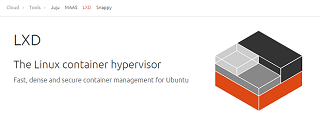n the density test, the server with 16GB of RAM was able to launch 37 KVM guests, and 536 identical LXD guests. Each guest was a full Ubuntu system that was able to respond on the network. While LXD cannot magically create additional CPU resources, it can use memory much more efficiently than KVM. For idle or low load workloads, this gives a density improvement of 1450%, or nearly 15 times more density than KVM
Not only did the test show that LXD could launch and sustain 14.5x the guests than KVM, it also starkly highlighted the difference in startup performance between the two technologies. The full 536 guests started with LXD in substantially less time than it took KVM to launch its 37 guests. On average, LXD guests started in 1.5 seconds, while KVM guests took 25 seconds to start.
For more info about the tests and LXD, read Ubuntu’s article








0 Comments